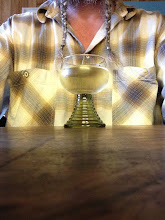It was a very good seminar. But anybody who stands up and talks about Dalibor Vesely takes a risk, a big one, since there is always going to be a disciple in the room. I've had to deal with it since, roughly, nineteen eighty four, my first encounter; they are strong people, but I've never believed them.
It was perhaps the acceptable face of post-modernism, that something lost should be regained, but I could never find divine revelation in a rooflight, much less heal the city by shading my drawings in. I may be too dumb. Even my friend Scott fights shy on taking on phenomenology, shaking his head and suggesting I look it up in wikipedia as we sit in the pub.
Their argument is conspicuously religious, but I'm not sure that politics is subservient to the transcendental, because practically speaking I've met plenty of architects whose transcendentalism was conspicuously political, in that their own circumstances conspicuously carved their opinions. It's chicken and egg (even if phenomenologists believe it isn't). Both Dalibor and Daniel Libeskind were exile genius's from the workers paradise, where the church fostered rebellion. And of course Dalibor is an expert and enthusisast for the baroque, that baroque of Loyola, that architecture intended to instruct, perhaps to save. Joseph Rykwert even tried to design modernist churches in his youth. Being materialist of mind, this is not for me. After all so many phenomenologically minded architects seem particularly devoted to the materialistic in the other sense, since those revelations certainly don't come cheap.
So I would prefer it if we said we would fix the city rather than heal it, and allow room for a little less piety, and a bit more filth.
Saturday, 30 November 2013
Subscribe to:
Post Comments (Atom)


No comments:
Post a Comment